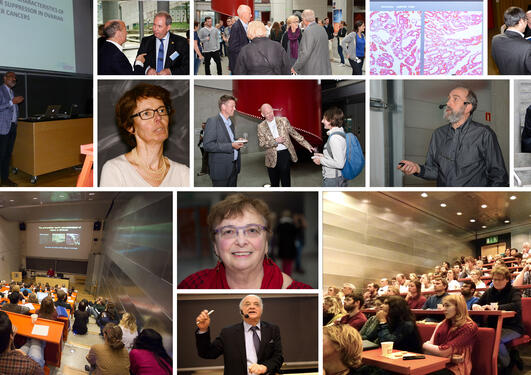CCBIO webinar: Randolph Watnick
Identification of a novel paracrine acting stimulator of tumor growth and progression via modulation of Tsp-1 in the tumor microenvironment
Main content
Randolph Watnick
Vascular Biology Program, Boston Children's Hospital, and Department of Surgery, Harvard Medical School, Boston, MA, USA
In the earliest stages of tumor development, epithelial tumors (carcinomas) are physically confined to the area of the tissue in which they form. These nascent lesions (carcinomas in situ) are sequestered from the tissue parenchyma by the basement membrane. Within the tissue parenchyma lies a myriad of cell types comprised of fibroblasts, immune and inflammatory cells and endothelial cells. Upon invasion across the basement membrane and into the tissue parenchyma, tumors must manipulate the expression of pro- and anti-tumorigenic proteins such that pro-tumorigenic factors are produced in vast excess to anti-tumorigenic proteins. One such anti-tumorigenic protein is thrombospondin-1 (Tsp-1). We have previously demonstrated that stimulation of Tsp-1 in the tumor microenvironment (TME) potently inhibits tumor growth and progression and in some cases induces tumor regression. Here, we identify a novel tumor-mediated mechanism to repress the expression of Tsp-1 in the TME via secretion of the serine protease PRSS2. We demonstrate that PRSS2 represses Tsp-1, not via its enzymatic activity, but by binding to the low-density lipoprotein receptor-related protein 1 (LRP1). These findings describe a novel activity for PRSS2 as well as novel ligand and activity for LRP1 and represent a potential therapeutic strategy to treat cancer by blocking the PRSS2-mediated repression of Tsp-1.
Chairperson: Lars A. Akslen, CCBIO


